Etiqueta "programming"
Se han encontrado 98 Coincidencias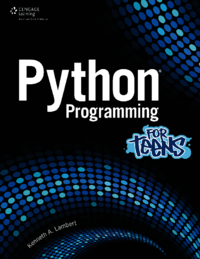
Python programming for teens
Programming
112 Visitas | 122 Descargas | 2015-10-26 04:31:47 | mmartin
If you want to learn how to program in Python, one of today's most popular computer programming languages, PYTHON PROGRAMMING FOR TEENS is the perfect first step. Written by teacher, author, and Python expert Kenneth Lambert, this book will help you build a solid understanding of programming and prepare you to make the jump to other languages and more advanced instruction. In PYTHON PROGRAMMING FOR TEENS, you will learn problem solving, program development, the basics of using classes and objects, and more. Special topics include 2-D geometry, fractals, animations, and recursion. The book's topics are illustrated using turtle graphics, a system that provides graphical output from programs and makes learning more fun. Get started programming today with PYTHON PROGRAMMING FOR TEENS.
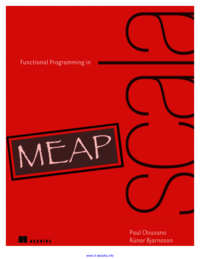
Functional Programming in Scala
Functional Programming in Scala MEAP
70 Visitas | 99 Descargas | 2015-11-02 15:34:17 | pecarrazana
This book introduces the concepts and techniques of functional programming (FP)—we use Scala as the vehicle, but the lessons here in can be applied to programming in any language. Our goal is to give you the foundations to begin writing substantive functional programs and to comfortably absorb new FP concepts and techniques beyond those covered here. Throughout the book we rely heavily on programming exercises, carefully chosen and sequenced to guide you to discover FP for yourself. Expository text is often just enough to lead you to the next exercise. Do these exercises and you will learn the material. Read without doing and you will find yourself lost.
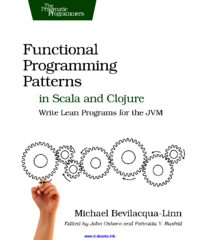
Functional Programming Patterns in Scala and Clojure
Functional Programming Patterns in Scala and Clojure
72 Visitas | 81 Descargas | 2015-11-02 15:38:56 | pecarrazana
This book is about patterns and functional programming in Scala and Clojure. It shows how to replace, or greatly simplify, many of the common patterns we use in object-oriented programming, and it introduces some patterns commonly used in the functional world. Used together, these patterns let programmers solve problems faster and in a more concise, declarative style than with object-oriented programming alone. If you’re using Java and want to see how functional programming can help you work more efficiently, or if you’ve started using Scala and Clojure and can’t quite wrap your head around functional problem-solving, this is the book for you.
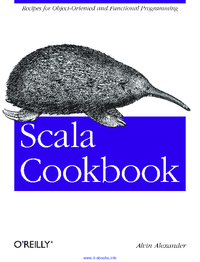
Scala Cookbook
Scala Cookbook
133 Visitas | 86 Descargas | 2015-11-02 15:41:21 | pecarrazana
This is a cookbook of problem-solving recipes about Scala, the most interesting programming language I’ve ever used. The book contains solutions to more than 250 common problems, shown with possibly more than 700 examples. (I haven’t counted, but I suspect that’s true.) There are a few unique things about this book: • As a cookbook, it’s intended to save you time by providing solutions to the most common problems you’ll encounter. • Almost all of the examples are shown in the Scala interpreter. As a result, whether you’re sitting by a computer, on a plane, or reading in your favorite recliner, you get the benefit of seeing their exact output. (Which often leads to, “Ah, so that’s howthat works.”) • The book covers not only the Scala language, but also has large chapters on Scalatools and libraries, including SBT, actors, the collections library (more than 100pages), and JSON processing. Just prior to its release, the book was updated to cover Scala 2.10.x and SBT 0.12.3.
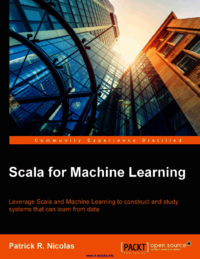
Scala for Machine Learning
Scala for Machine Learning
84 Visitas | 98 Descargas | 2015-11-02 15:43:18 | pecarrazana
Not a single day passes by that we do not hear about Big Data in the news media, technical conferences, and even coffee shops. The ever-increasing amount of data collected in process monitoring, research, or simple human behavior becomes valuable only if you extract knowledge from it. Machine learning is the essential tool to mine data for gold (knowledge). This book covers the "what", "why", and "how" of machine learning: • What are the objectives and the mathematical foundation of machine learning? • Why is Scala the ideal programming language to implement machine learning algorithms? • How can you apply machine learning to solve real-world problems? Throughout this book, machine learning algorithms are described with diagrams, mathematical formulation, and documented snippets of Scala code, allowing you to understand these key concepts in your own unique way.
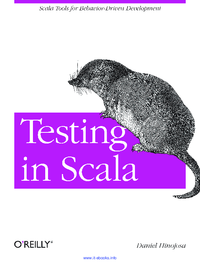
Testing in Scala
68 Visitas | 87 Descargas | 2015-11-02 15:47:56 | pecarrazana
This book enhances the Scala language with standard test-driven development practices, highlighting the best testing tools today. This book will cover both the ScalaTest and the Specs2 testing frameworks, which help you create quick and easy tests. Testing is also often the most overlooked aspect of introductory programming language books. This book is dedicated to mending that gap.We will run all these tests using Simple Build Tool (SBT). SBT is similar to some earlier build tools and competitors: Maven, Gradle, and Buildr. What makes SBT highly attractive is its ease of use and the small size of the build file. Type a few lines of code for your build file and you’re off and running on your project. We will also cover SBT’s wonderful triggered execution feature, which complements test-driven development by building and testing code whenever a file is saved.ScalaTest and Specs2 are two of the most dominant testing frameworks for Scala around today. Each framework has a different intent and goal, but they share the some ideal of making testing concise, and they both leverage the Scala programming language to make testing easy and fun. Testing frameworks are nothing new, of course, and have been used with other programming languages for years. Those familiar with other programming languages and their testing tools will find some similarities with Scala’s current testing tools. ScalaTest and Specs2 borrowed ideas from Cucumber. But upon these shoulders of giants, Scala testing systems have also stepped out on their own and created some of the most mind-blowing testing tools found in any language. Testing in Scala will also illustrate mocking code, so as to keep our tests isolated from large subsystems and networks. Mocking is, in essence, creating a substitute for various objects to isolate tests from volatile elements of their environment (such as the contents of databases) and to help unit tests run fast. This book shows how you can use Scala with Java-based mocking frameworks that have been used for years by Java programmers, EasyMock and Mockito. We will also introduce you to a new framework, ScalaMock. Formerly known as Borachio, ScalaMock was inspired by Java’s EasyMock and Mockito but takes their work further, even offering support for mocking final classes and Scala objects.
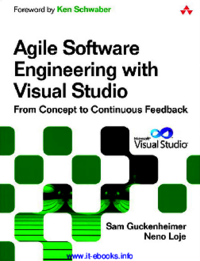
Agile Software Engineering with Visual Studio
Agile Software Engineering with Visual Studio
111 Visitas | 136 Descargas | 2015-11-02 16:02:23 | pecarrazana
Five years ago, we extended the world’s leading product for individual developers, Microsoft Visual Studio, into Visual Studio Team System, and it quickly became the world’s leading product for development teams. This addition of Application Lifecycle Management (ALM) to Visual Studio made life easier and more productive for hundreds of thousands of our users and tens of thousands of our Microsoft colleagues. In 2010, we shipped Visual Studio 2010 Premium, Ultimate, Test Professional, and Team Foundation Server. (We’ve dropped the Team System name.) We’ve learned a lot from our customers in the past five years. Visual Stu- dio 2010 is a huge release that enables a high-performance Agile software team to release higher-quality software more frequently. We set out to enable a broad set of scenarios for our customers. We systematically attacked major root causes of waste in the application lifecycle, elevated transparency for the broadly engaged team, and focused on flow of value for the end customer. We have eliminated unnecessary silos among roles, to focus on empowering a multidisciplinary, self-managing team. Here are some examples.
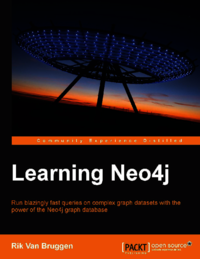
Learning Neo4j
Learning Neo4j. Run blazingly fast queries on complex graph datasets with the power of the Neo4j graph database
95 Visitas | 81 Descargas | 2015-11-05 19:49:40 | pecarrazana
Who this book is for: If you are an IT professional or developer who wants to get started in the field of graph databases, this is the book for you. Anyone with prior experience with SQL in the relational database world will very quickly feel at ease with Neo4j and its Cypher query language and learn a lot from this book.
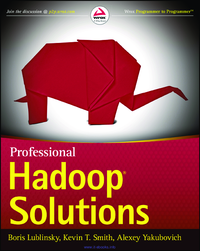
Professional Hadoop Solutions
Hadoop Solutions
71 Visitas | 68 Descargas | 2015-11-13 20:47:47 | pecarrazana
It’s not that there is a lack of books about Hadoop. Quite a few have been written, and many of them are very good. So, why this one? Well, when the authors started working with Hadoop, we wished there was a book that went beyond APIs and explained how the many parts of the Hadoop ecosystem work together and can be used to build enterprise-grade solutions. We were looking for a book that walks the reader through the data design and how it impacts implementation, as well as explains how MapReduce works, and how to reformulate specific business problems in MapReduce.We were looking for answers to the following questions: ? What are MapReduce’s strengths and weaknesses, and how can you customize it to better suit your needs? ? Why do you need an additional orchestration layer on top of MapReduce, and how does Oozie fit the bill? ? How can you simplify MapReduce development using domain-specific languages (DSLs)? ? What is this real-time Hadoop that everyone is talking about, what can it do, and what canit not do? How does it work?
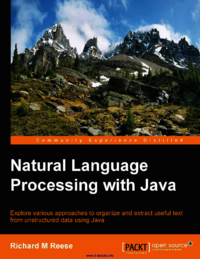
Natural Language Processing with Java
Natural Language Processing with Java
115 Visitas | 135 Descargas | 2015-11-19 21:04:23 | pecarrazana
What this book covers Chapter 1, Introduction to NLP, explains the importance and uses of NLP. The NLP techniques used in this chapter are explained with simple examples illustrating their use. Chapter 2, Finding Parts of Text, focuses primarily on tokenization. This is the first step in more advanced NLP tasks. Both core Java and Java NLP tokenization APIs are illustrated. Chapter 3, Finding Sentences, proves that sentence boundary disambiguation is an important NLP task. This step is a precursor for many other downstream NLP tasks where text elements should not be split across sentence boundaries. This includes ensuring that all phrases are in one sentence and supporting parts of speech analysis. Chapter 4, Finding People and Things, covers what is commonly referred to as Named Entity Recognition. This task is concerned with identifying people, places, and similar entities in text. This technique is a preliminary step for processing queries and searches. Chapter 5, Detecting Parts of Speech, shows you how to detect parts of speech, which are grammatical elements of text, such as nouns and verbs. Identifying these elements is a significant step in determining the meaning of text and detecting relationships within text. Chapter 6, Classifying Texts and Documents, proves that classifying text is useful for tasks such as spam detection and sentiment analysis. The NLP techniques that support this process are investigated and illustrated. Chapter 7, Using Parser to Extract Relationships, demonstrates parse trees. A parse tree is used for many purposes, including information extraction. It holds information regarding the relationships between these elements. An example implementing a simple query is presented to illustrate this process. Chapter 8, Combined Approaches, contains techniques for extracting data from various types of documents, such as PDF and Word files. This is followed by an examination of how the previous NLP techniques can be combined into a pipeline to solve larger problems.
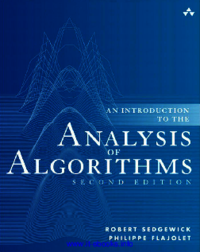
An Introduction to the Analysis of Algorithms
Análisis de algoritmos
139 Visitas | 185 Descargas | 2015-12-14 14:04:12 | josedaniel
This book is intended to be a thorough overview of the primary techniques used in the mathematical analysis of algorithms. The material covered draws from classical mathematical topics, including discrete mathematics, elementary real analysis, and combinatorics, as well as from classical computer science topics, including algorithms and data structures. The focus is on “average-case” or “probabilistic” analysis, though the basic mathematical tools required for “worst-case” or “complexity” analysis are covered as well.
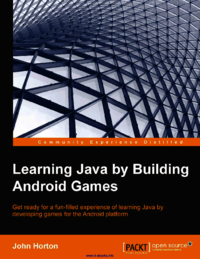
Learning Java by Building Android Games
Programación en Java para Android
157 Visitas | 191 Descargas | 2015-12-16 19:06:16 | josedaniel
This book will show you how to get your Android development environment set up and you will soon have your first working game. The difficulty level grows steadily with the introduction of key Java topics such as loops, methods, and OOP. You'll then use them in the development of games. You will learn how to build a math test game, a Simon-like memory game, a retro pong-style game, and for the grand finale, a Snake-style, retro arcade game with real Google Play leaderboards and achievements. The book has a hands-on approach and is packed with screenshots.
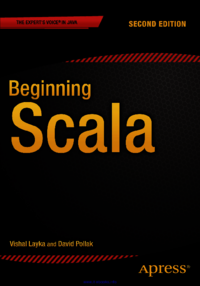
Beginning Scala, 2nd Edition
Programación en Scala
74 Visitas | 96 Descargas | 2016-01-05 19:44:46 | asielalonso
The first step in writing Scala is not being afraid of the fact that Scala’s going to warp your brain. The next step in writing Scala is accepting that your code is going to look like Java, Ruby, Python, whatever code for a while. It will take you time and effort and more time to code Scala using the idioms in this book. It will take you time to design code that fits into Scala paradigms and to discover and devise paradigms of your own. It will take time but hopefully less time than it took me. This book is for you. It’s my attempt to show you a different way of thinking about and writing code. I hope that you’ll enjoy our journey through Scala together. I hope that by the end of this book you’ll have a new perspective on coding. I hope that you’ll be writing better code and fewer lines of code yet are happier about the code that you’re writing. So, come along. Stick that little toe in the Scala waters and see if they feel as good for you as they have for me.
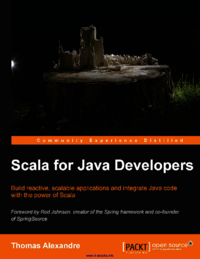
Scala for Java Developers
Programación en Scala
77 Visitas | 108 Descargas | 2016-01-05 19:49:08 | asielalonso
As a Java developer, you must have heard a lot about Scala, even if you haven't yet written any Scala code. You must have noticed that Scala is becoming popular and heard vigorous debate about it. As I sat down to write this, I typed "scala is" into Google. The top completions included "scala is awesome", "scala is too complex", and "scala is hard." Understandably, you may be confused by such polarization. You may also have heard arcane, possibly off-putting details about obscure Scala idioms and advanced functional programming. What you probably have not heard is a methodical, impartial attempt to answer questions such as "might Scala make me more productive in my daily work?", "will it be easy for me to pick up Scala?", and ultimately, "Should I switch from Java to Scala?".
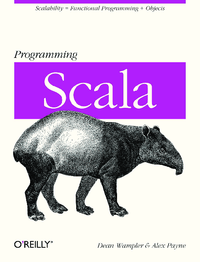
Programming Scala
Programación en Scala
68 Visitas | 90 Descargas | 2016-01-05 19:52:05 | asielalonso
When I discovered Scala some years ago, the thing that made the biggest impression on me was its composability. Through some very elegant design choices and simple yet powerful abstractions that were taken from the object-oriented and functional programming worlds, Martin Odersky has managed to create a language with high cohesion and orthogonal, deep abstractions that invites composability in all dimensions of software design. Scala is truly a SCAlable LAnguage that scales with usage, from scripting all the way up to large-scale enterprise applications and middleware. Scala was born out of academia, but it has grown into a pragmatic and practical language that is very much ready for real-world production use. You are about to learn how to write reusable components using mixin and function composition; how to write concurrent applications using Scala’s Actors; how to make effective use of Scala’s XML/XPath support; how to utilize Scala?s rich, flexible, and expressive syntax to build Domain-Specific Languages; how to effectively test your Scala code; how to use Scala with popular frameworks such as Spring, Hadoop, and Terracotta; and much, much more. Enjoy the ride. I sure did.
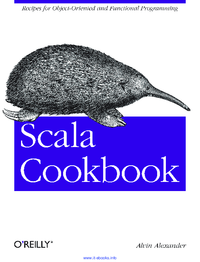
Scala Cookbook
Programación en Scala
82 Visitas | 117 Descargas | 2016-01-05 19:55:56 | asielalonso
Save time and trouble when using Scala to build object-oriented, functional, and concurrent applications. With more than 250 ready-to-use recipes and 700 code examples, this comprehensive cookbook covers the most common problems you'll encounter when using the Scala language, libraries, and tools. It's ideal not only for experienced Scala developers, but also for programmers learning to use this JVM language.
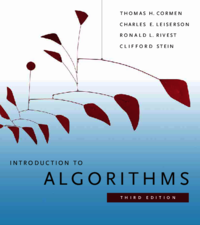
Introduction to Algorithms
Teoría de estructuras de datos, algoritmos y técnicas de programación.
94 Visitas | 108 Descargas | 2016-01-28 16:08:30 | josedaniel
This textbook is a classic in this field, it provides you with an enjoyable introduction to the field of algorithms. We have attempted to make every algorithm accessible and interesting. To help you when you encounter unfamiliar or difficult algorithms, we describe each one in a step-by-step manner. We also provide careful explanations of the mathematics needed to understand the analysis of the algorithms. If you already have some familiarity with a topic, you will find the chapters organized so that you can skim introductory sections and proceed quickly to the more advanced material.
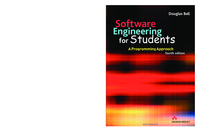
Software Engineering for Students
Software Engineering for Students. A Programming Approach
125 Visitas | 147 Descargas | 2016-01-29 15:54:47 | josedaniel
This book explains the different principles, techniques and tools that are used in software development. These are the mainstream methods that are currently used throughout the industrialized world. This book doesn’t present easy answers about the value of these techniques. Indeed, it asks the reader to make an assessment of the techniques. This is what the software engineer has to do – now and in the future – choose the appropriate techniques for the project in hand from the multiplicity of techniques that are on offer.
Contribuir
Usted puede contribuir con Libros UCLV, es importante para nosotros su aporte..
Contribuir